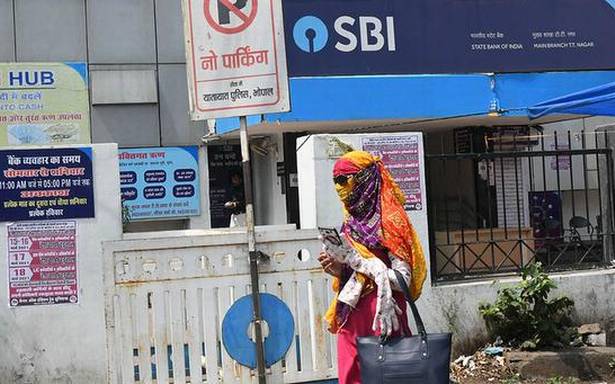Stress seen in home, gold and SME loan segments, observes chairman Khara
State Bank of India (SBI) on Wednesday said first-quarter, standalone net profit rose 55.3% to ₹6,504 crore due to lower loan loss provisioning and sizeable recovery from a bad loan account. This is its highest-ever quarterly net profit, the bank said in a filing.
This record profit was aided by recovery of ₹1,692 from Kingfisher Airlines loan account during the quarter. Loan loss provisions slid 46.6% to ₹5,030 crore.
It said slippages on account of the second wave of COVID-19 rose multifold to ₹15,666 crore from ₹3,637 crore. But a significant part of this amount had been pulled back in July, chairman Dinesh Kumar Khara said at a video press conference.
“The most impact was felt in May. The localised lockdowns had significant impact on our business and collections. Under the circumstances, the bank has done reasonably well. We expect recovery to improve in the coming quarters,” Mr. Khara said. He declined to give any guidance for FY22 due to the uncertain economic environment.
He said stress was seen in the housing, gold and SME loan segments. During the quarter, the bank received loan ‘restructuring 2.0’ proposals worth ₹7,302 crore, of which ₹5,246 crore had been approved.
Gross NPAs rose 3.55% to ₹1,34,259 crore while net NPAs increased 1.05% to ₹43,153 crore.
COVID-19 related contingency provisioning was at ₹9,065 crore, it said.
Net Interest Income (NII) increased 3.74% to ₹27,638 crore while domestic net interest margin (NIM) declined 9 basis points (bps) to 3.15%. Total deposits grew 8.82% to ₹37,20,987 crore. Gross advances increased 5.79% to ₹25,23,793 crore.
The loan book grew 6.27%. Despite stress in home loans, the chairman said the bank would increase the size of the housing loan book.
“There is no reason to worry. The pullback has already happened on housing loan [default]. We have no plans to slow down the home loan book,” Mr. Khara said.
He said the bank had made enough provisions for bad loans and will increase its advances depending upon the appetite of the market.
Provision Coverage Ratio (PCR) declined 39 bps to 85.9%. Slippage Ratio rose to 2.47% from 0.60% a year earlier.
The capital adequacy ratio improved by 26 bps to 13.66% as on June 30 — not including the quarter’s profit, the bank said.
Source: Read Full Article

